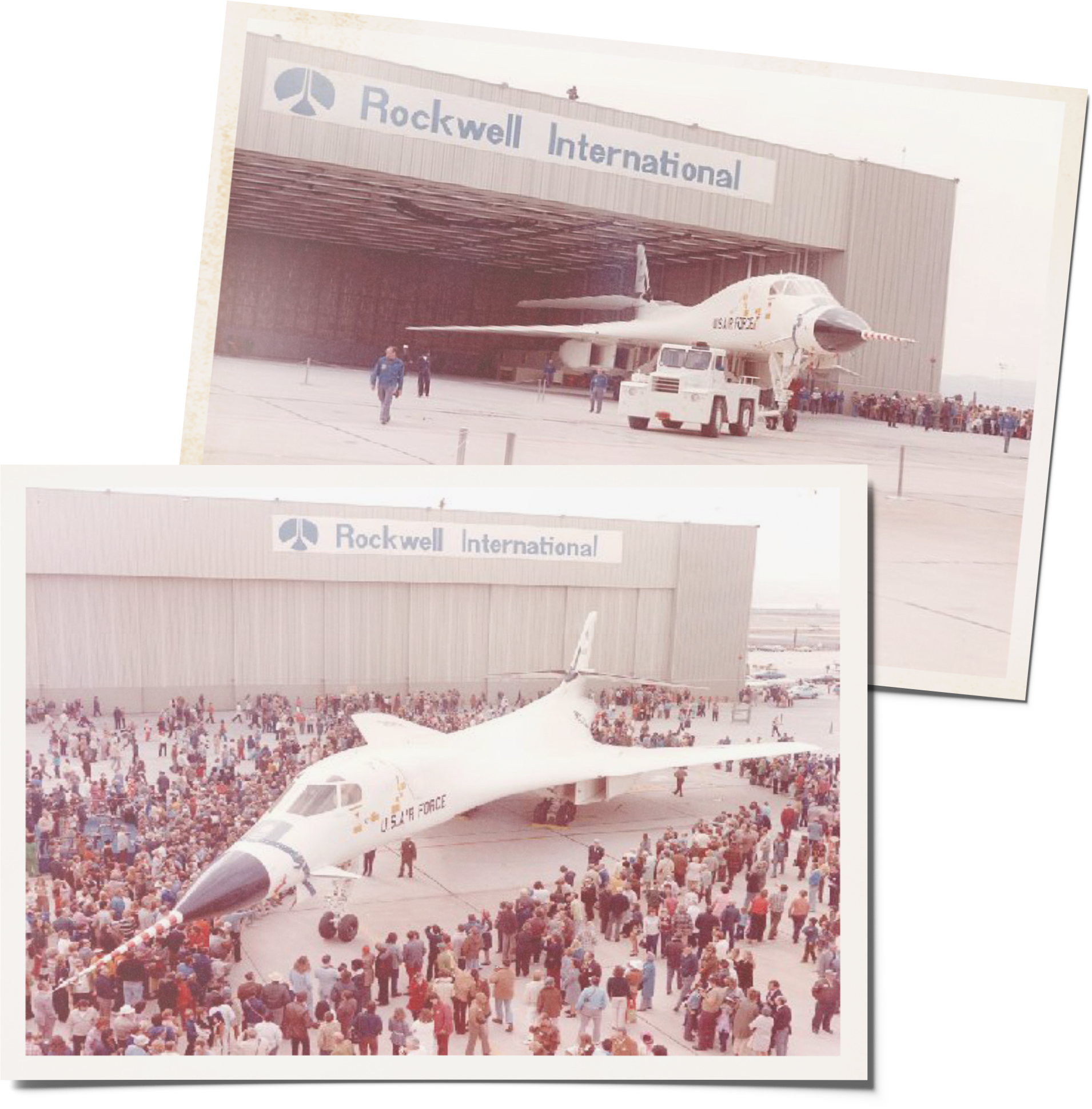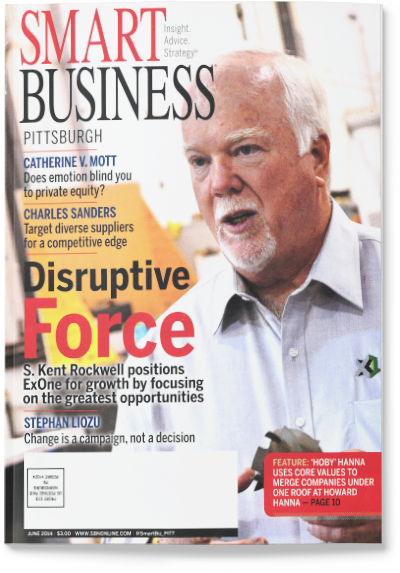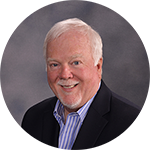History
To say Rockwell Venture Capital started in 1983 would be an oversimplification. It was established as a company that year, but its true historical family roots run much deeper.
The Rockwell name can be found on influential manufacturing and engineering organizations dating back to the turn of the 20th century. Kent’s grandfather, Colonel Willard Fredrick Rockwell, an MIT engineer, started it all with the Wisconsin Parts Company which he joined in order to produce truck axles with his own more efficient designs. The company became quite successful through diversifying its product offerings. The Colonel acquired the company and merged it with part of the Timken Spring and Axle Company to create what eventually became the Rockwell Standard Company, a diversified manufacturer of automotive components.
Two Empires: The Rockwell Story
Concurrently, Colonel Rockwell, known for his ability to manage ailing investments, worked with the Mellon Bank to get involved with acquisition of the Pittsburgh Equitable Meter Company which would later be renamed the Rockwell Manufacturing Company. Under the leadership of Kent’s father, Willard Fredrick Rockwell Jr., nicknamed Al, the company diversified during the 50’s and 60s into a variety of metering products as well as power tools.
In the late 60s and 70s, Al and the Colonel aggressively grew the companies to form Rockwell International by accomplishing the merger of North American Aviation, a military aircraft production company, with Rockwell Standard and Rockwell Manufacturing. During the 70’s, Rockwell International won major contracts to build the five Space Shuttles for NASA and later, the B1 Bomber for the US Air Force.
Kent’s place in the Rockwell story begins in 1969 after graduating from Lafayette College and attending the Wharton School of Business where he studied economics and finance. Following a year in the Army, Kent was offered two opportunities to work within the family business. He could either move to Dubios, PA to work as a foreman producing gas meters or run a small commuter airline that Colonel Rockwell had invested in. During his last year at Lafayette College Kent had learned to fly planes so he jumped at the chance to work in aviation. When Kent joined the fledgling airline, it was losing money, so in addition to running the airline, he started to buy and sell aircraft. Kent kept the struggling airline going for four years using his own inheritance to keep it afloat. Five years after Kent took over, a competitor, Allegheny Airlines started its own commuter program and wiped the small airline, Keystone Commuter, off the map by taking over the primary routes. Kent lost everything he had inherited but walked away with his first important lesson in winning and losing in the capitalist system along with the knowledge of how to buy and sell aircraft. To this date, he’s still buying and selling aircraft and has sold more than 630 aircraft.
Kent’s place in the Rockwell story begins in 1969 after graduating from Lafayette College and attending the Wharton School of Business where he studied economics and finance. Following a year in the Army, Kent was offered two opportunities to work within the family business. He could either move to Dubios, PA to work as a foreman producing gas meters or run a small commuter airline that Colonel Rockwell had invested in. During his last year at Lafayette College Kent had learned to fly planes so he jumped at the chance to work in aviation. When Kent joined the fledgling airline, it was losing money, so in addition to running the airline, he started to buy and sell aircraft. Kent kept the struggling airline going for four years using his own inheritance to keep it afloat. Five years after Kent took over, a competitor, Allegheny Airlines started its own commuter program and wiped the small airline, Keystone Commuter, off the map by taking over the primary routes. Kent lost everything he had inherited but walked away with his first important lesson in winning and losing in the capitalist system along with the knowledge of how to buy and sell aircraft. To this date, he’s still buying and selling aircraft and has sold more than 630 aircraft.

ROCKWELL INTERNATIONAL
 Kent’s next opportunity came working in Business Development at Rockwell International, starting in 1975. He managed a portfolio of incubative businesses within the company and, later, became President of the Energy Products Group, a $600,000,000 group of industrial businesses. His time with Rockwell International exploring high tech investment taught him a few maxims for the future. “Seven out of ten high tech investments in a portfolio will likely end in failure. So, you need to know twice as much about managing failures as you do about managing successes”. These developmental opportunities provided Kent the experience of learning how to manage portfolio business strategies and pursue multiple incubative technologies. During this period, Kent became the Chairman of McEvoy Oilfield Equipment, a Rockwell International equity investment. McEvoy grew quickly and successfully in the international undersea drilling markets until it was sold to Smith International.
Kent’s next opportunity came working in Business Development at Rockwell International, starting in 1975. He managed a portfolio of incubative businesses within the company and, later, became President of the Energy Products Group, a $600,000,000 group of industrial businesses. His time with Rockwell International exploring high tech investment taught him a few maxims for the future. “Seven out of ten high tech investments in a portfolio will likely end in failure. So, you need to know twice as much about managing failures as you do about managing successes”. These developmental opportunities provided Kent the experience of learning how to manage portfolio business strategies and pursue multiple incubative technologies. During this period, Kent became the Chairman of McEvoy Oilfield Equipment, a Rockwell International equity investment. McEvoy grew quickly and successfully in the international undersea drilling markets until it was sold to Smith International.
ASTROTECH
 In 1983, Kent left Rockwell International to start his own investment company, Rockwell Venture Capital (RVC). In the early 80’s AstroTech International was positioned by Al Rockwell to become a leading company when America's space program was planned to be privatized by the government. However, following the Space Shuttle Challenger disaster in 1986, the company lost strategic stability and suffered major losses when President Reagan reversed the space privatization initiative. This prompted Kent to replace his father and step in as Chairman and CEO of the struggling enterprise. In order to turn AstroTech around, Kent began liquidating the company over a period of two years. Every asset and investment was on the chopping block including the Satellite Processing Center in Cape Canaveral, Florida. In a short time, the investments were sold and fully liquidated and there were but three employees left in this public shell company - Kent, a bookkeeper and a lawyer. The resulting sales had generated $26,000,000 in cash being left in the company.
In 1983, Kent left Rockwell International to start his own investment company, Rockwell Venture Capital (RVC). In the early 80’s AstroTech International was positioned by Al Rockwell to become a leading company when America's space program was planned to be privatized by the government. However, following the Space Shuttle Challenger disaster in 1986, the company lost strategic stability and suffered major losses when President Reagan reversed the space privatization initiative. This prompted Kent to replace his father and step in as Chairman and CEO of the struggling enterprise. In order to turn AstroTech around, Kent began liquidating the company over a period of two years. Every asset and investment was on the chopping block including the Satellite Processing Center in Cape Canaveral, Florida. In a short time, the investments were sold and fully liquidated and there were but three employees left in this public shell company - Kent, a bookkeeper and a lawyer. The resulting sales had generated $26,000,000 in cash being left in the company.
Rather than close the company and simply pay off the preferred shareholders, Kent negotiated a recapitalization of all the shareholders to keep the company operating and subsequently, made eight acquisitions over a seven-year period in the oil field industry. That positioned the company so that when it was sold, in 1997, all the shareholders participated. On the choice to payout the proceeds to only to the preferred investors and leave the common shareholders penniless, Kent simply said, "it would not have been the honorable thing to do."
APPALACHIAN TIMBER SERVICES
 While in the midst of helping AstroTech International recover to its potential, Kent, through RVC, acquired a distressed company in West Virginia that makes railway ties and railway bridges: Appalachian Timber Services (ATS). ATS treats and manufactures products for railroads, transit agencies, railroad contractors, mining and heavy industry. The company required a few years of environmental remediation in order to perform effectively for the needs of all its stakeholders. ATS has invested aggressively in becoming an environmental model for others in the industry and the company has since proven to be a healthy investment within the US railway economy. ATS still is innovating new production technologies today for the rail industry.
While in the midst of helping AstroTech International recover to its potential, Kent, through RVC, acquired a distressed company in West Virginia that makes railway ties and railway bridges: Appalachian Timber Services (ATS). ATS treats and manufactures products for railroads, transit agencies, railroad contractors, mining and heavy industry. The company required a few years of environmental remediation in order to perform effectively for the needs of all its stakeholders. ATS has invested aggressively in becoming an environmental model for others in the industry and the company has since proven to be a healthy investment within the US railway economy. ATS still is innovating new production technologies today for the rail industry.
STRATA PRODUCTS
 In 1992 HLR, a large South African company and global provider of mining technologies partnered with ATS to promote safety in the mining and energy sectors. They sought to launch their mine roof support systems in the U.S. and created a 50-50 joint venture. HLR was interested in partnering with ATS in order to gain access to the wooden tie products for mining roof support systems which the company was manufacturing as well as to access the mining markets within eastern US where ATS is based. Strata Products was born from the joint venture.
In 1992 HLR, a large South African company and global provider of mining technologies partnered with ATS to promote safety in the mining and energy sectors. They sought to launch their mine roof support systems in the U.S. and created a 50-50 joint venture. HLR was interested in partnering with ATS in order to gain access to the wooden tie products for mining roof support systems which the company was manufacturing as well as to access the mining markets within eastern US where ATS is based. Strata Products was born from the joint venture.HLR suffered major losses in South Africa and subsequently sold its 50 percent interest in Strata Products to ATS. ATS owned 100% of the mine systems technology which was able to apply to mining operations in the U.S as well as in further technologies that allowed the company to grow in several different ways. Strata Products grew rapidly with its expanding mining safety product lines and services. Kent Rockwell remained as Chairman of Strata Products while it’s President, Rory Paton Ash pursued growth by acquisition of other mining technologies which led to the further investment in Strata Proximity Systems. This innovative technology accelerated the growth of Strata Products into a leader in mining safety products and systems globally. The company grew from one employee in 1992 to over 500 by 2005. The company was sold to a family investment concern in 2007.
SENSYSTECH
 In 1998, RVC invested in a company based in Washington D.C. that made electronic surveillance, communication systems. Originally known as ST Research, at the time of the initial investment, the company became Sensystech after negotiating a merger with the Daedalus Corporation, a small ailing public company based in Detroit. Kent then became Chairman and CEO and, under his supervision, Sensystech (STST) became a successful business in cell phone and communication technologies for various government agencies. After four years of growth, Kent negotiated a merger of STST with a much larger company in the military defense communications thereby creating Argon ST.
In 1998, RVC invested in a company based in Washington D.C. that made electronic surveillance, communication systems. Originally known as ST Research, at the time of the initial investment, the company became Sensystech after negotiating a merger with the Daedalus Corporation, a small ailing public company based in Detroit. Kent then became Chairman and CEO and, under his supervision, Sensystech (STST) became a successful business in cell phone and communication technologies for various government agencies. After four years of growth, Kent negotiated a merger of STST with a much larger company in the military defense communications thereby creating Argon ST.
ARGON ST
 Argon ST is the result of the success of SenSyTech and Kent hearing the Argon Engineering CEO speak at a conference. Argon was a much larger company in a field related to SenSyTech, Inc., a defense and intelligence business. Kent saw mutual benefits and approached the Argon CEO about the two companies. Argon ST came to fruition a year later. The merger of Sensystech and Argon created a more diversified public entity known as Argon ST. Kent retained the role of Vice Chairman of the company and focused on growth initiatives within the government marketplace for Electronic Surveillence Equipment such as C4ISR and combat systems which allow users to make timely, critical decisions by supplying the information to intercept communications. The company prospered and was acquired by Boeing in 2010.
Argon ST is the result of the success of SenSyTech and Kent hearing the Argon Engineering CEO speak at a conference. Argon was a much larger company in a field related to SenSyTech, Inc., a defense and intelligence business. Kent saw mutual benefits and approached the Argon CEO about the two companies. Argon ST came to fruition a year later. The merger of Sensystech and Argon created a more diversified public entity known as Argon ST. Kent retained the role of Vice Chairman of the company and focused on growth initiatives within the government marketplace for Electronic Surveillence Equipment such as C4ISR and combat systems which allow users to make timely, critical decisions by supplying the information to intercept communications. The company prospered and was acquired by Boeing in 2010.
EXONE
 In 2007, a childhood friend and industrial entrepreneur associate of Kent, Larry Rhoades, untimely passed away leaving his startup company, ExOne, in dire need of capital and management to continue in existence. This company was invested in more than twenty differentiated businesses, most of which were incubative startups. The combined cash requirements of these investments amounted to a large capital requirement which the heirs of Larry Rhodes estate were unwilling to make. Kent negotiated with the family members and acquired the company at a substantial discount to the book value of assets.
In 2007, a childhood friend and industrial entrepreneur associate of Kent, Larry Rhoades, untimely passed away leaving his startup company, ExOne, in dire need of capital and management to continue in existence. This company was invested in more than twenty differentiated businesses, most of which were incubative startups. The combined cash requirements of these investments amounted to a large capital requirement which the heirs of Larry Rhodes estate were unwilling to make. Kent negotiated with the family members and acquired the company at a substantial discount to the book value of assets.With his past experience, Kent knew he had to cut the losses quickly and not spend all the capital remaining into all of these various investments at the expense of the few good ones that might succeed. He cut the 20 businesses down to just 5 in the first year to stop the bleeding of cash.
One of the 5 businesses that made the cut was a 3D printing process, using a binder jetting technology that had a global market potential with its investments in Germany, Japan and the U.S. The first few years were spent 3D printing gold copings for the dental industry. When gold prices rose precipitously, ExOne exited the diminishing dental application and began to focus on 3D printing in fine powdered metals and sand for a variety of broader industrial applications. The financial markets took a strong belief in the future of 3D printing and ExOne became public in an IPO (XONE) in 2013. The success of the IPO was rewarding to a much larger capitalization which has permitted the company to pursue growth objectives within its global markets which demonstrate large potential for future value as the product implementation matures for the global users.

PURIS
 Puris, a newly formed company by RVC in 2014, was created to develop the titanium metal powder market for the demand from 3D printing markets It was purchased by Kent through a bankruptcy process with the prior owners and creditors to save the existing technology for the benefit of certain government customers. The business, again, had certain assets unrelated to the powder business which were sold off to achieve a concentrated focus on the essential technology from the predecessor company. A new management team was installed to take this production technology to the next more productive level. In a period of 24 months an innovative production process was completed and Puris was recognized in the marketplace for the highest quality fine titanium powder to be produced globally. Carpenter Technologies, a global provider of metal powders, acquired this business from RVC in 2017.
Puris, a newly formed company by RVC in 2014, was created to develop the titanium metal powder market for the demand from 3D printing markets It was purchased by Kent through a bankruptcy process with the prior owners and creditors to save the existing technology for the benefit of certain government customers. The business, again, had certain assets unrelated to the powder business which were sold off to achieve a concentrated focus on the essential technology from the predecessor company. A new management team was installed to take this production technology to the next more productive level. In a period of 24 months an innovative production process was completed and Puris was recognized in the marketplace for the highest quality fine titanium powder to be produced globally. Carpenter Technologies, a global provider of metal powders, acquired this business from RVC in 2017.
Today, in addition to participating in the 3D manufacturing world, RVC is innovating in the waste management and mining safety industries.
ECOREMEDY
 The Ecoremedy gasification system is the world’s most versatile platform for energy and nutrient recovery from organic waste. It is primed to offer clean energy solutions across a variety of industry sectors. Kent became interested in this investment because he recognized the potential of the technology as an innovative ecological solution to growing issues in a variety of waste management systems.
The Ecoremedy gasification system is the world’s most versatile platform for energy and nutrient recovery from organic waste. It is primed to offer clean energy solutions across a variety of industry sectors. Kent became interested in this investment because he recognized the potential of the technology as an innovative ecological solution to growing issues in a variety of waste management systems. As of May 2020, the technology is still in the beta phase that will require an independent engineering report to verify the viability and efficacy of the integrated system. The beta site was built in coordination with the Morrisville Municipal Authority in Morrisville, Pennsylvania and serves as the proof of concept. This project addresses the rising costs and shrinking outlets for disposal of biosolids by processing biosolids into renewable thermal energy, dried biosolids, activated biochar, and concentrated nutrients.
It’s clear to Kent that the waste industry is primed for this technology and he expects the eventual success of the beta project to open up the marketplace to the many interested municipalities clamoring for a green solution to their waste issues. Kent serves as the Chairman of the board and provides the capital and business strategies to bring this integrated system to market.
MINE VISION SYSTEMS
 Mine Vision Systems is transforming the way data is captured inside an underground mine in order to map the mines subtle and unpredictable shifts in order to best assure miner safety. In 2016, Mine Vision Systems approached Kent in search of funding. They had developed an advanced system for mapping underground mines that could revolutionize mine analysis and safety. Kent’s prior experience with the success of Strata gave him a knowledge and understanding of the mining industry that allowed him to recognize Mine Vision Systems as an innovative technology.
Mine Vision Systems is transforming the way data is captured inside an underground mine in order to map the mines subtle and unpredictable shifts in order to best assure miner safety. In 2016, Mine Vision Systems approached Kent in search of funding. They had developed an advanced system for mapping underground mines that could revolutionize mine analysis and safety. Kent’s prior experience with the success of Strata gave him a knowledge and understanding of the mining industry that allowed him to recognize Mine Vision Systems as an innovative technology. The technology was developed by six of Carnegie Mellon University’s top robotic engineers from the National Robotics Engineering Consortium (NREC), the premier robotics lab in the country. The breakthrough technology that combines LiDAR sensors and AI-enabled image processing software gives Mine Vision Systems a unique competitive edge.
RVC provides an active role in managing company leadership and advising on key business strategies. Kent feels bullish on the future of the company and expects to achieve great success once the adoption curve accelerates. The technology is already being used by some of the biggest names in the mining industry like Sandvik, Hitachi, and including many hard rock global mining companies.
“Being a disruptor is not particularly easy.
It takes a great deal of patience, fortitude
and money.”
It takes a great deal of patience, fortitude
and money.”
Colonel Rockwell grew a small axle business into one of the largest companies in the world while Al Rockwell took the Rockwell name into outer space. Kent has followed in his forefathers’ footsteps and built a successful business on innovation, diversification and effective process implementation.
Ultimately, the successes of Rockwell Venture Capital have allowed Kent to fuel the S. Kent Rockwell Foundation which is dedicated to working with others in order to continue to rehabilitate, preserve and maintain our world’s most precious natural environments and benefit societal and humanitarian needs. The foundation concentrates it efforts into conservation, community, education and innovation.

